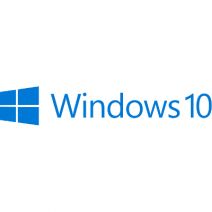 We’re counting down the days until the release of Windows 10 on July 29th. The Microsoft hype train is in full gear and the world has high expectations for the new OS. This begs the question, “Should your business upgrade to Windows 10 as soon as possible?”
We’re counting down the days until the release of Windows 10 on July 29th. The Microsoft hype train is in full gear and the world has high expectations for the new OS. This begs the question, “Should your business upgrade to Windows 10 as soon as possible?”
For its part, Microsoft has marketed Windows 10 in such a way that upgrading is as easy as clicking a notification in your Windows 7 and 8 System Tray that says “Yes” or “Go!” If you haven’t yet pre-ordered your copy of Windows 10, Microsoft will nag you about it for the next month, hoping that you’ll cave and click “Yes.”
The times sure have changed. Remember when the earliest possible way to get a new version of Windows was to stand in line at your local electronics retailer for a midnight release? Downloading a new OS is much more convenient. However, upgrading without doing your homework can lead to major and unforeseen problems. Here are five reasons why you may want to hold off on upgrading to Windows 10 until the dust settles from its release.
- Compatibility: Windows 10 might not be compatible with every program that you’re currently using. This can be particularly devastating if a mission-critical app doesn’t work on your newly-installed OS. In addition to Windows 10 not being compatible with certain apps, it may not jive with needed peripherals like older scanners, printers, optical drives, etc. While Microsoft makes upgrading to Windows 10 super easy, downgrading back to an older OS is a huge pain in the neck.
- Change in workflow: Adopting a new OS means getting every employee acquainted with the new software’s interface. If you’re not prepared for this disruption, you’re going to be disappointed when you experience a short time of decreased productivity.
- A new Internet Browser: For Windows 10, Microsoft is saying goodbye to Internet Explorer and hello to its replacement, Edge. While the previews of Edge look promising, it’s important to keep in mind that it’s a 1.0 product, which means that it’s unlikely to be error-free.
- No service pack: When upgrading to a new Windows OS, it’s customary for businesses to wait until Microsoft releases a major service pack. The reason for such a move is to give Microsoft the chance to address and fix bugs that aren’t discovered until after the software is released to the public. Otherwise, your business will essentially be a beta tester for Microsoft.
- The potential to lose data and settings: Shield Watch explains, “Just like the browser upgrade, an entire OS upgrade comes with the potential for data loss. If you’re one of the brave to venture early we suggest you have a complete backup of your computer including system state, files and settings since there may be no going back!”
Of course, if you like the new OS, you can upgrade on day one. Although, it’s important to remember that adopting a new system for your company’s mission-critical equipment is a big deal and shouldn’t be adopted without first knowing what you’re getting into. Therefore, when upgrading to Windows 10, we recommend a cautious approach and to make sure that all of your company’s bases are covered.
To receive expert advice and guidance with your move to Windows 10, give Evolve IT a call at (518) 203-2110.

